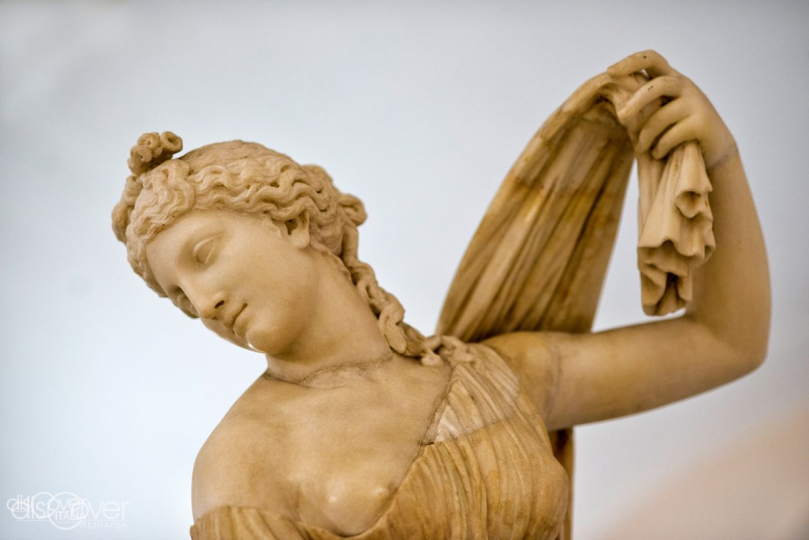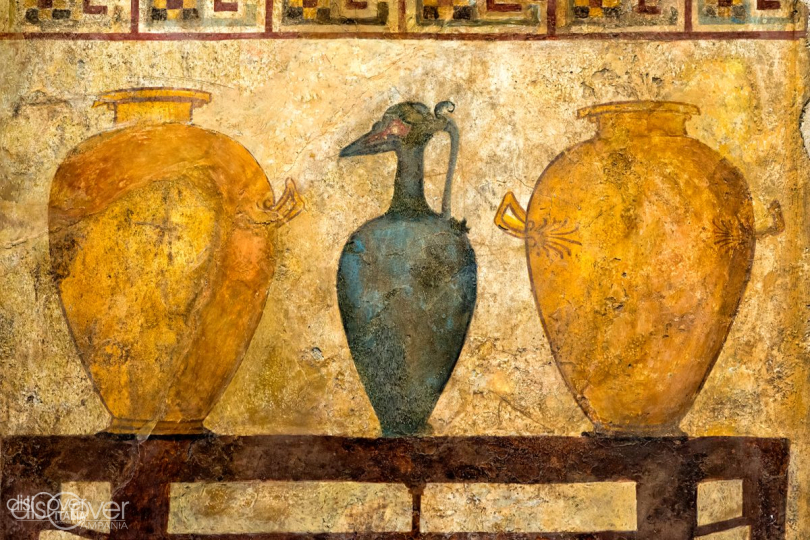Originally, on that site outside the Aragonese walls, but included in the city expanding towards the north during the vice-royal period, the new royal stables were to be built. Construction began in 1585, but without finishing. The architect Giulio Cesare Fontana remembered that incomplete building and at the beginning of the 17th century planned its transformation as the new Palazzo degli Studi, seat of the university. The building maintained its function until 1777, when the transfer of the university to another location opened the possibility for a new metamorphosis, signed by the architects Ferdinando Fuga and Pompeo Schiantarelli: adequately enlarged and made into a museum, it would have guaranteed a worthy accommodation to the Farnese Collection and the many findings that continued to emerge from the new excavations in the vesuvian area. In the new large museum, raised by another floor and with a severe facade with dark piperno pilasters highlighted on the characteristic Pompeian red color, were centralized the Herculaneum Museum by the Royal Palace of Portici, the Farnesian Museum of Capodimonte, the public library and the schools of fine arts. In 1816 King Ferdinand I officially established the Royal Bourbon Museum, with the complete collection of works inherited from the Farnese. Expanded later, the museum was enriched with a statue of Minerva by Antonio Canova, placed in the center of the spectacular staircase. The Museum as it was known to the Neapolitans, that became national with the unification of Italy, took on the current name of the National Archaeological Museum of Naples MANN in 1957.
The various installations taking place over time have all had the extraordinary Farnese Collection as their main attraction, starting with the famous sculptures of the Bull and Hercules. Then there is the unique heritage of findings from vesuvian sites, including the most significant collection of Pompeian frescoes. Third in the world in importance is the Egyptian collection, protagonist of a recent rearrangement. The arrangement of the Magna Graecia collection is also new, fueled since the 18th century by the findings excavated in the sites throughout the South and by the acquisition of private collections. The Prehistoric Section, the epigraphic, numismatic, gem and mosaic collections and the topographic sector are also note worthy. The Secret Cabinet with erotic findings from Pompeii and Herculaneum is also open to the public. Below the historic building, at the "Museum" metro stop, in the Neapolis station, are displayed the findings found in the city during excavations for the construction of the underground.
Useful Information
Open from Wednesday to Monday 9.00-19.30
Closing operations start at 19.00 Closed on Tuesday
Full day ticket € 15 -
Young EU citizens between 18 and 25 years €
Family (2 adults) € 27
Special (Artecard holder) € 7.50 Free for under 18, teachers and for the disabled people






